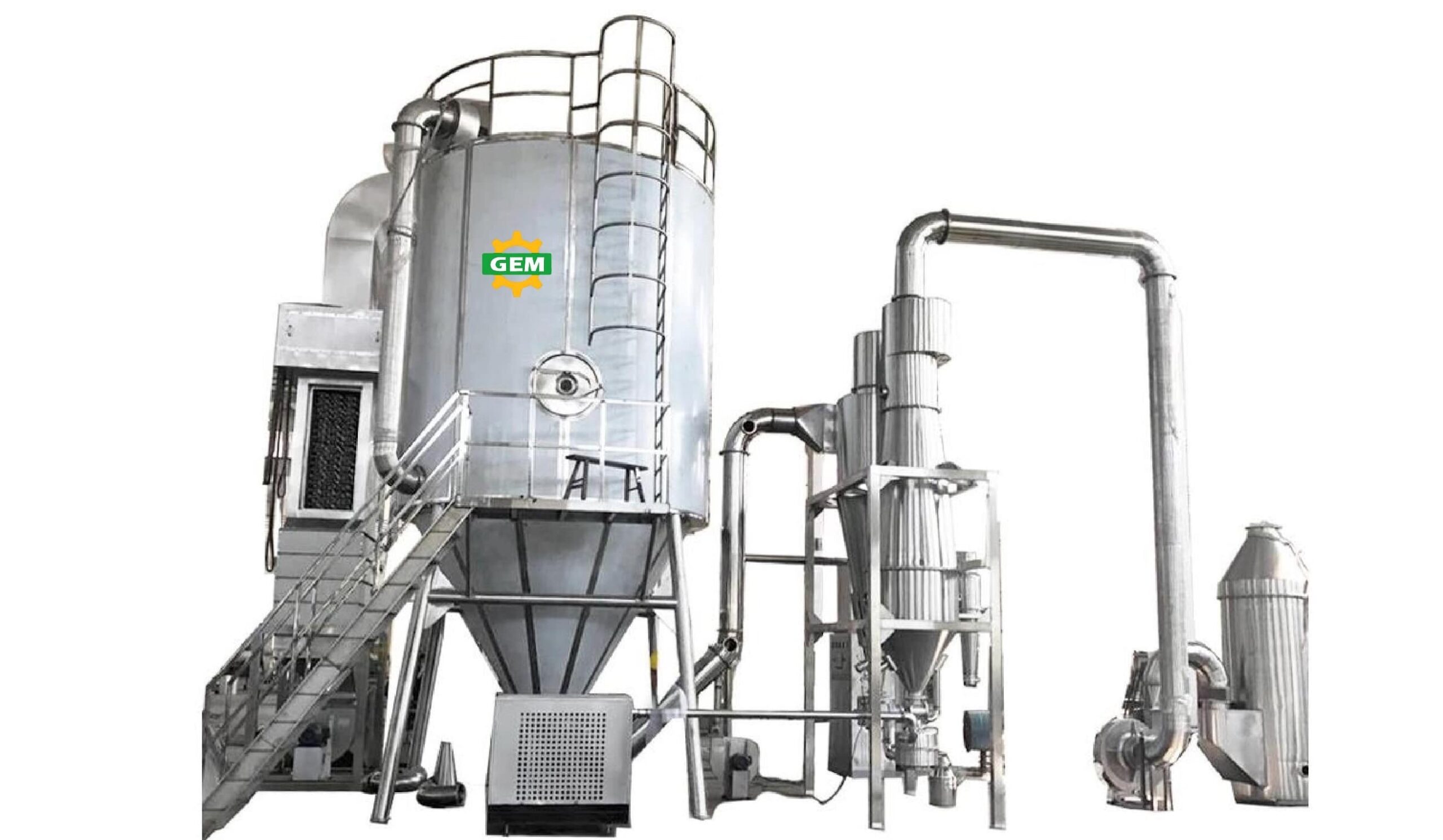Over 25,000 spray dryers are now estimated to be commercially in use to dry products from agrochemical, biotechnology products, fine and heavy chemicals, dairy products, dyestuffs, mineral concentrates to pharmaceuticals in capacities ranging from a few kg/h to over 50 tons/h evaporation capacity.
The advantages of spray dryers are that this technique can handle heat sensitive, non-heat-sensitive, and heat-resistant pump able fluids as feedstock from which a powder is produced. Produce dry material of controllable particle size, shape, form, moisture content, and other specific properties irrespective of dryer capacity and heat sensitivity. Provide continuous operation adaptable to both conventional and PLC control. Handle wide range of production rates, i.e., any individual capacity requirement can be designed by spray dryers. Provide extensive flexibility in spray dryer design, such as drying of organic solvent-based feedstock without explosion and fire risk; drying of aqueous feedstock (where the resulting powders exhibit potentially explosive properties as a powder cloud in air); drying of toxic materials; drying of feedstock that require handling in aseptic and hygienic drying conditions; drying of liquid feedstock to granular, agglomerated, and non-agglomerated products
Advantages Of Spray Drying
- The droplets are small, giving a large surface area for heat and mass transfer so that evaporation is very rapid.
- It can be used for drying heat sensitive or oxidized materials without degradation.
- It can be designed for drying under sterile conditions.
- The dried powder will have a uniform particle size and shape. Because of good flow properties, the spray-dried powder can be easily compressed into the form of tablets.
- It is useful in the coating and encapsulation of both solids and liquids.
- Labor cost is low since the material is dried in a single operation with no handling.

Design Of Atomizer Of Spray Dryer
Working Principle: At the heart of a spray dryer lies the ingenious process of atomization, where liquid feed is transformed into fine droplets, encountering hot air in a drying chamber. This results in the evaporation of the liquid, leaving behind a finely powdered product.
Components: Discover the key components that make up a spray dryer, from the atomization system to the powder collection apparatus. Each element plays a crucial role in ensuring the efficiency and reliability of the drying process.
Types of Atomizers: Explore the various atomization techniques, including pressure nozzles, rotary atomizers, and centrifugal atomizers, each with its unique strengths and applications.
Inlet and Outlet Temperatures: Learn about the significance of inlet and outlet temperatures in achieving optimal drying conditions and product quality.
Feed Rate and Airflow: Understand how the feed rate and airflow impact the efficiency and productivity of a spray dryer, allowing for precise control over the drying process.
Atomization Systems: rotary atomizers with a broad range of special wheels as well as high-pressure nozzles and twin-fluid nozzles. In addition to our own rotary dryer solutions, we also supply parts and complete atomizer retrofits for other brands.
PARTICLE DESIGN AND DEVELOPMENT
Dust-free powder
Size and shape (form)
Solubility
Sink ability
Particle size (distribution)
Bulk density
Agglomerated or non-agglomerated
Design

